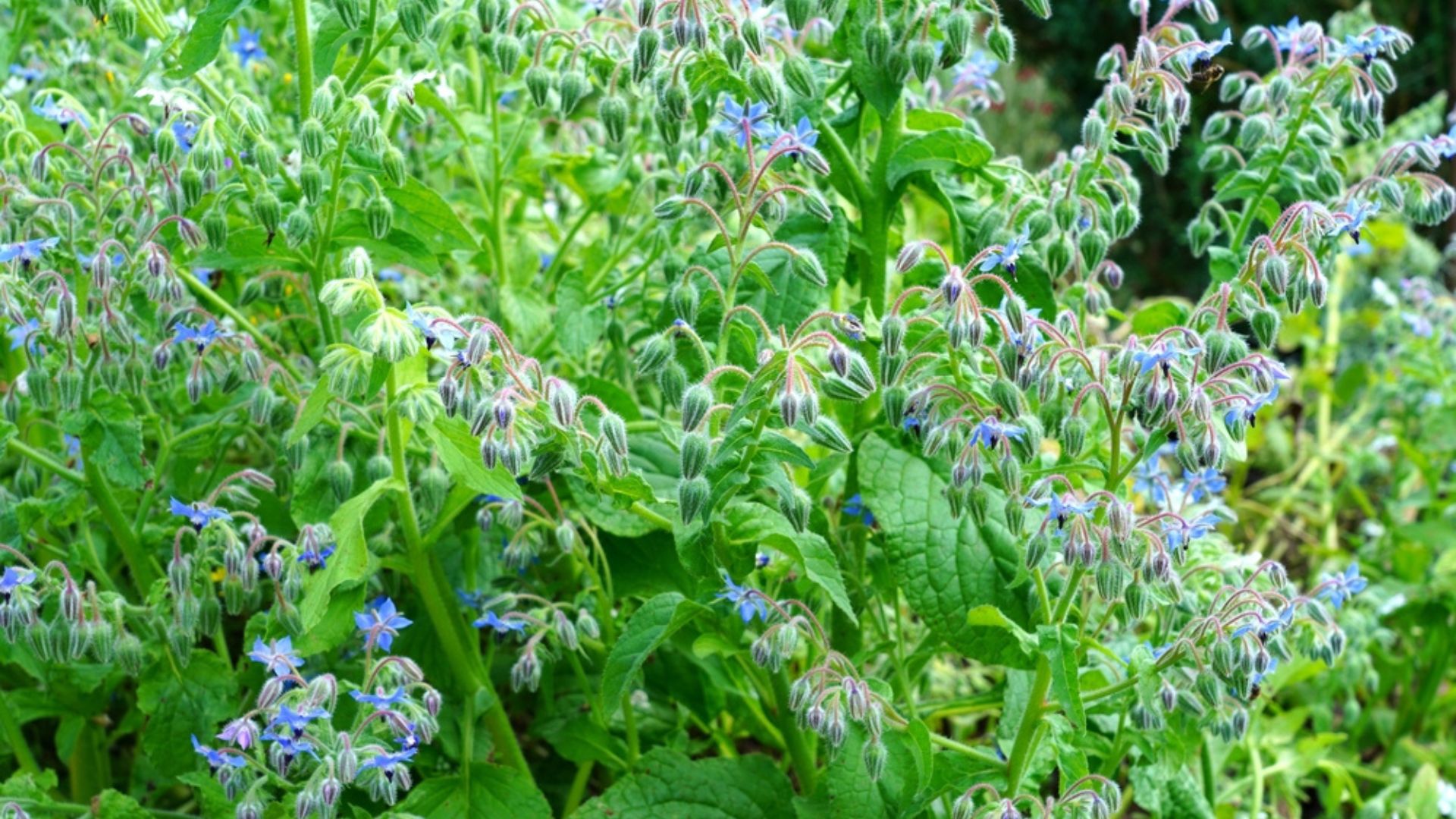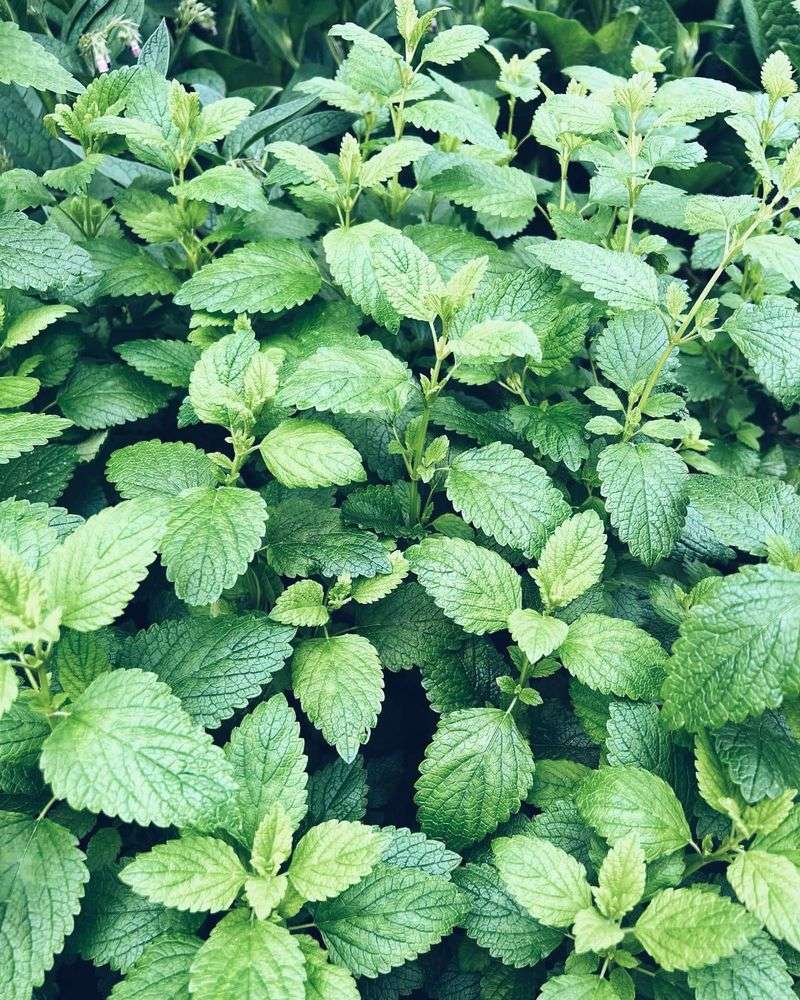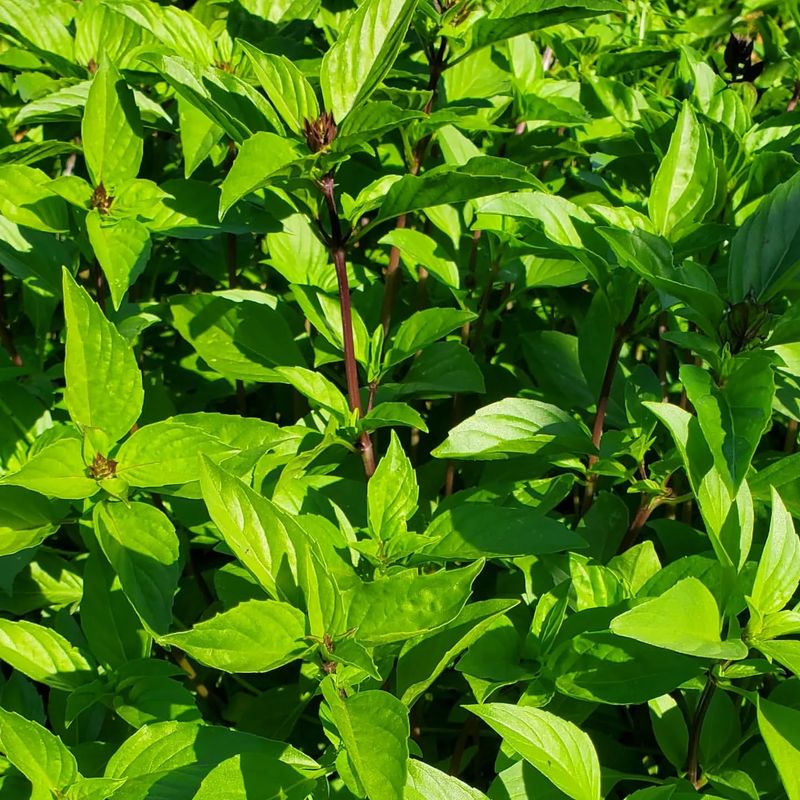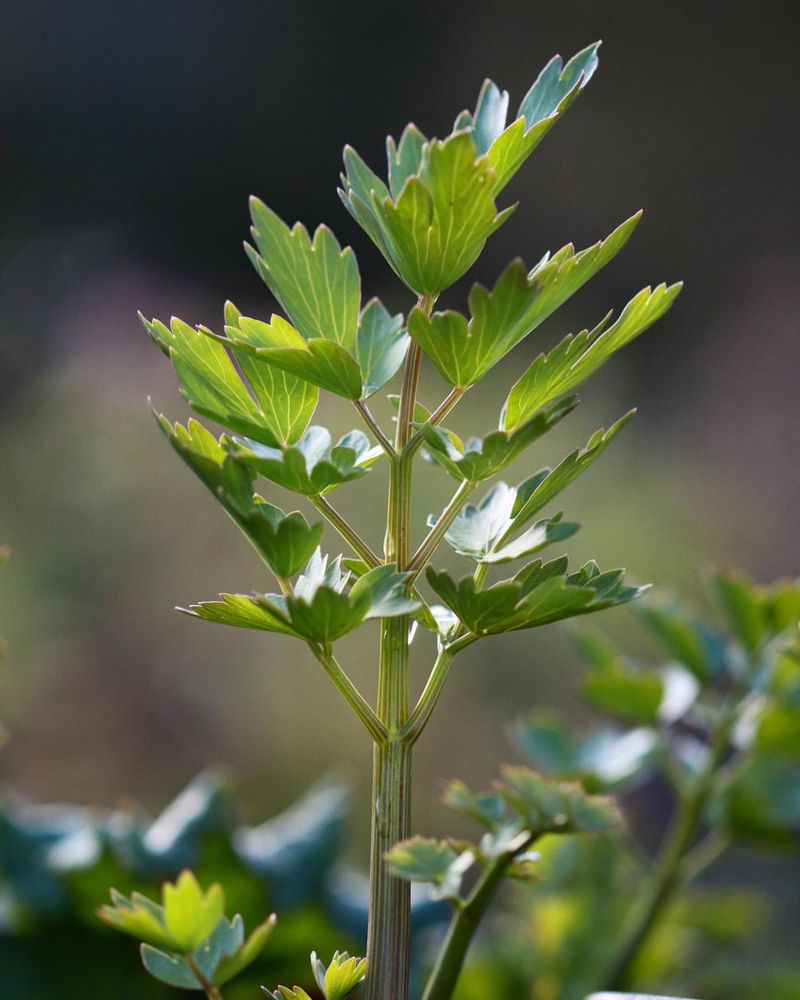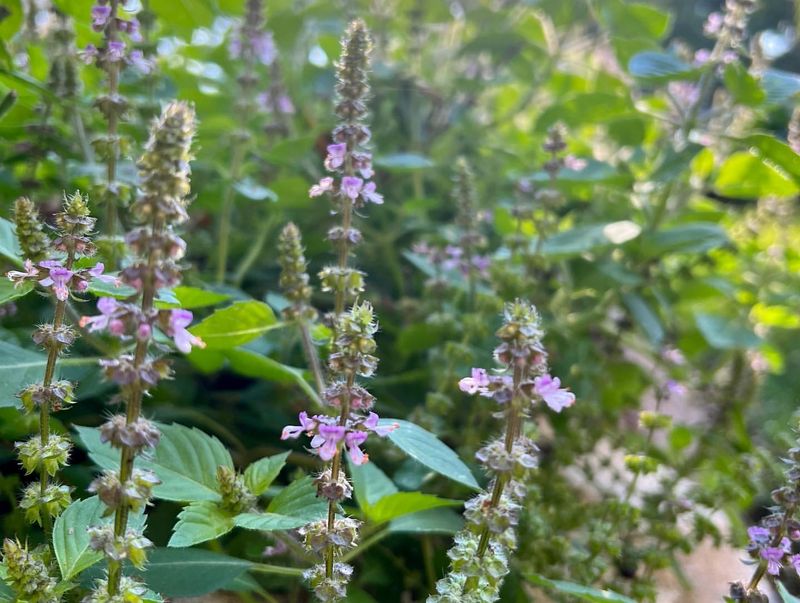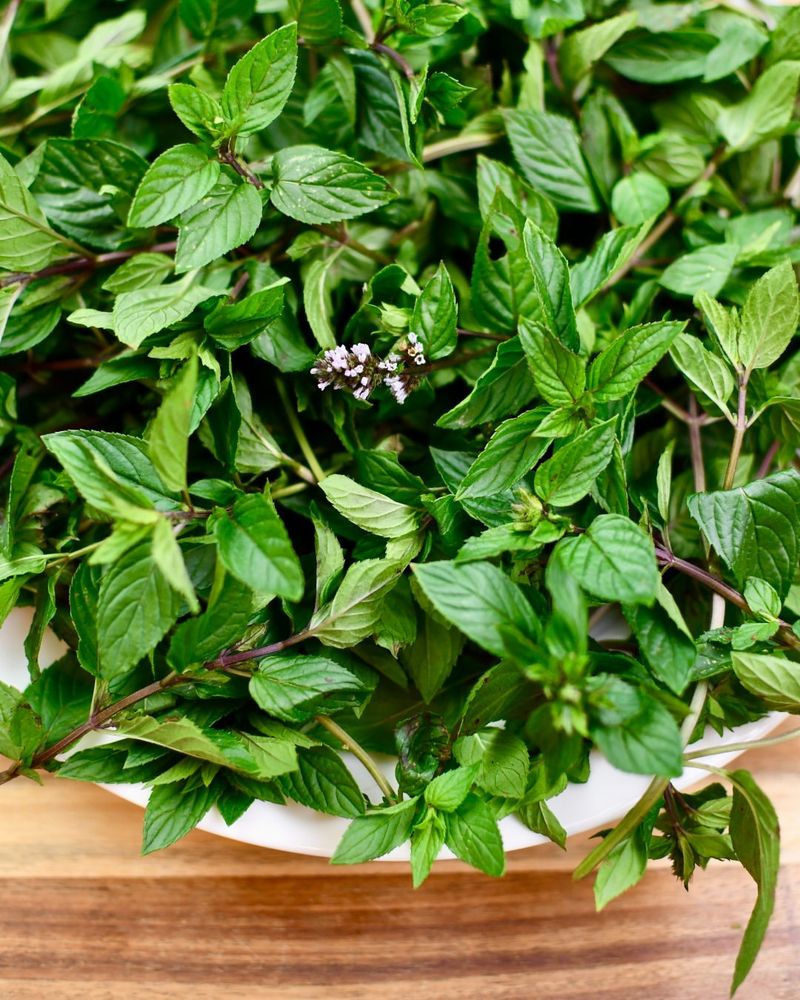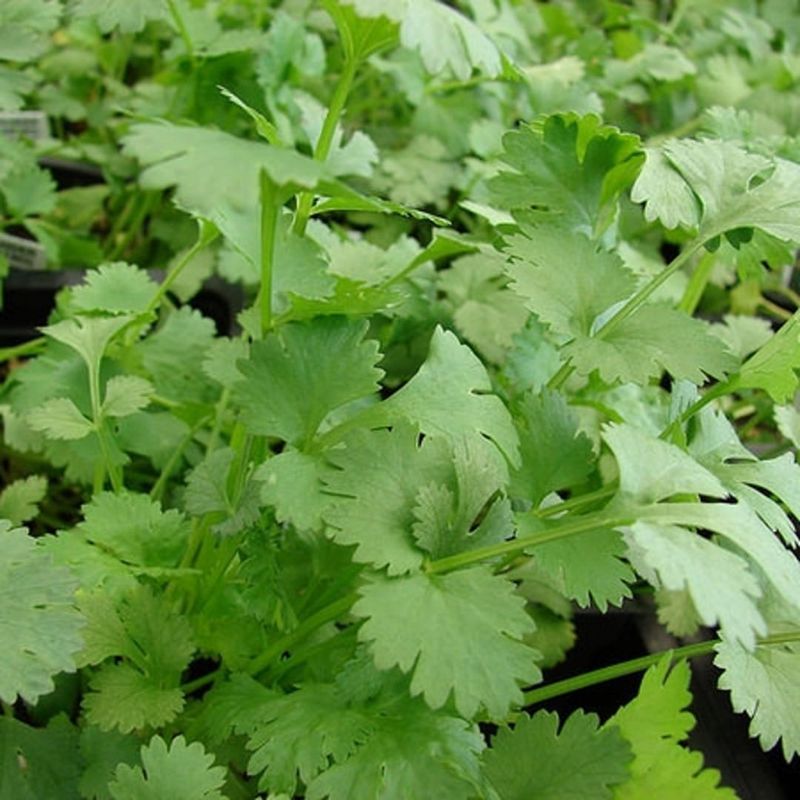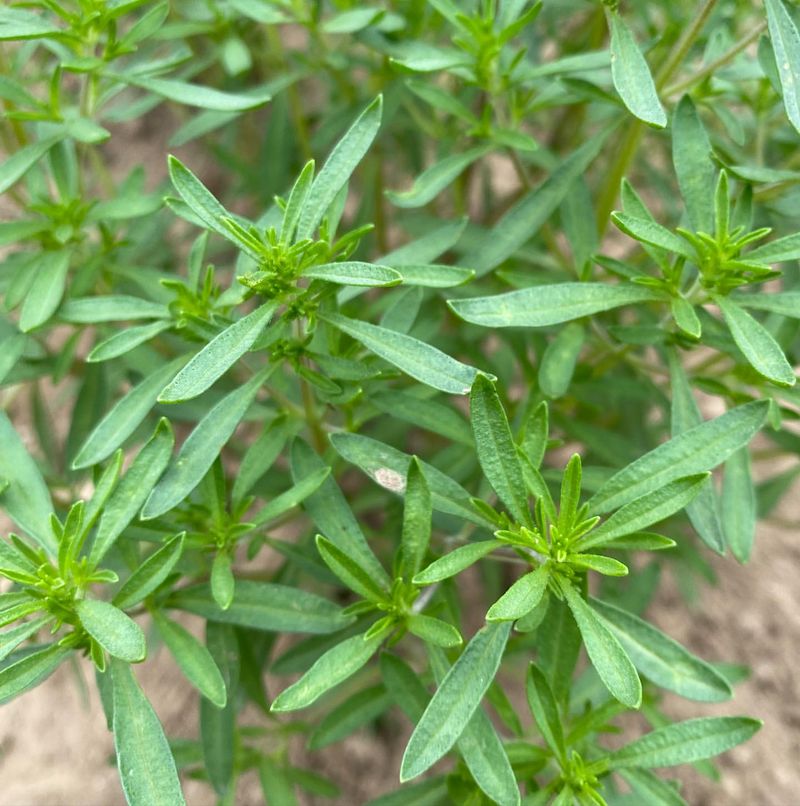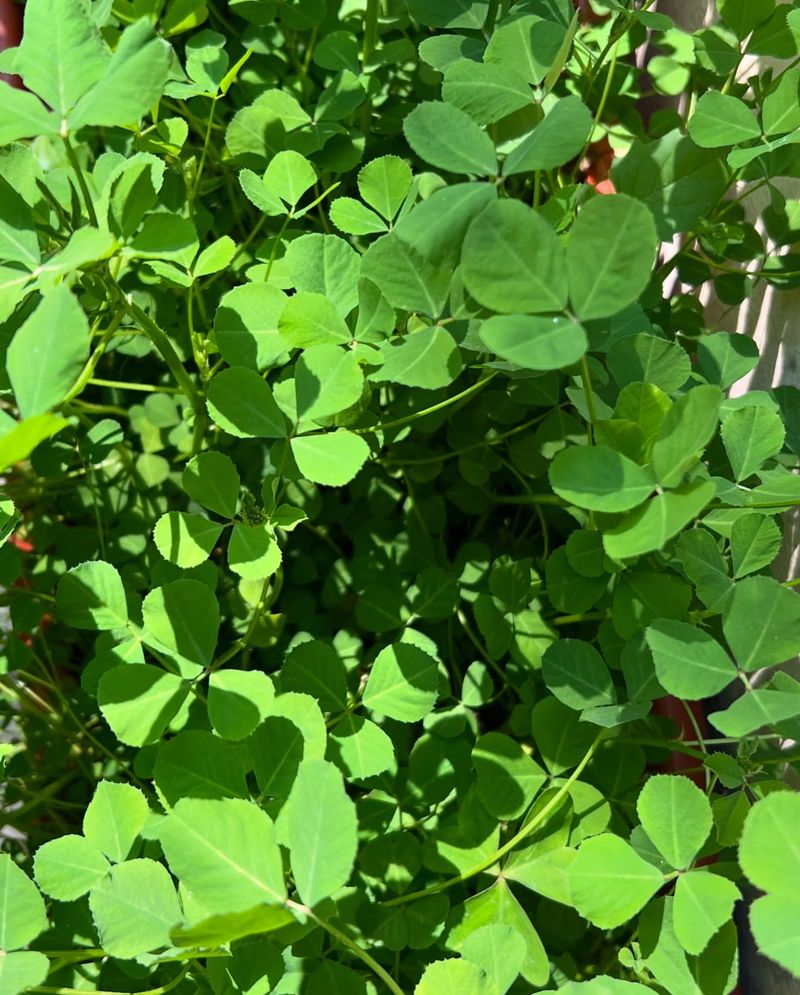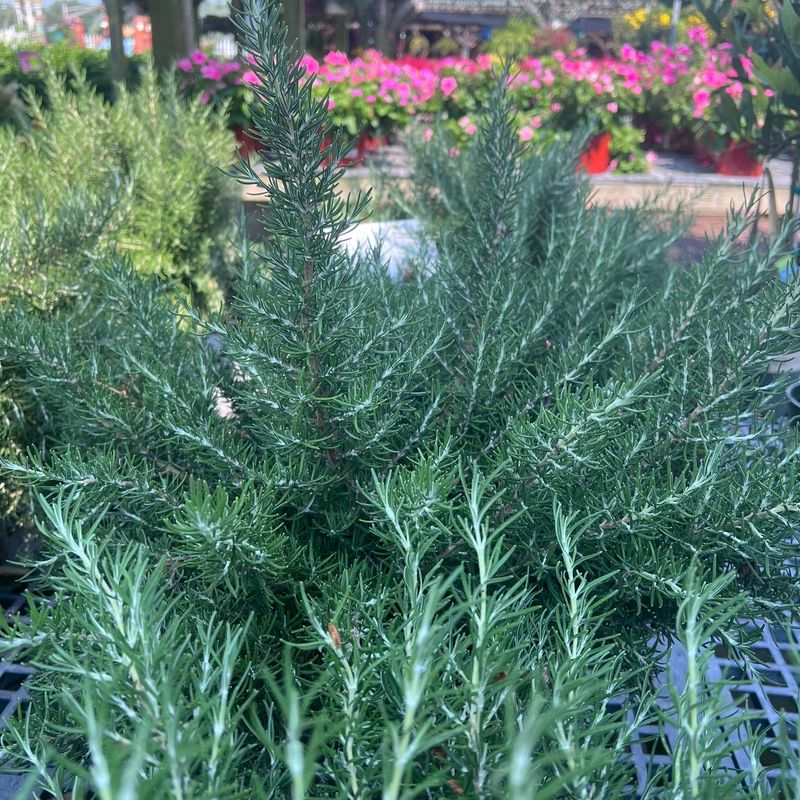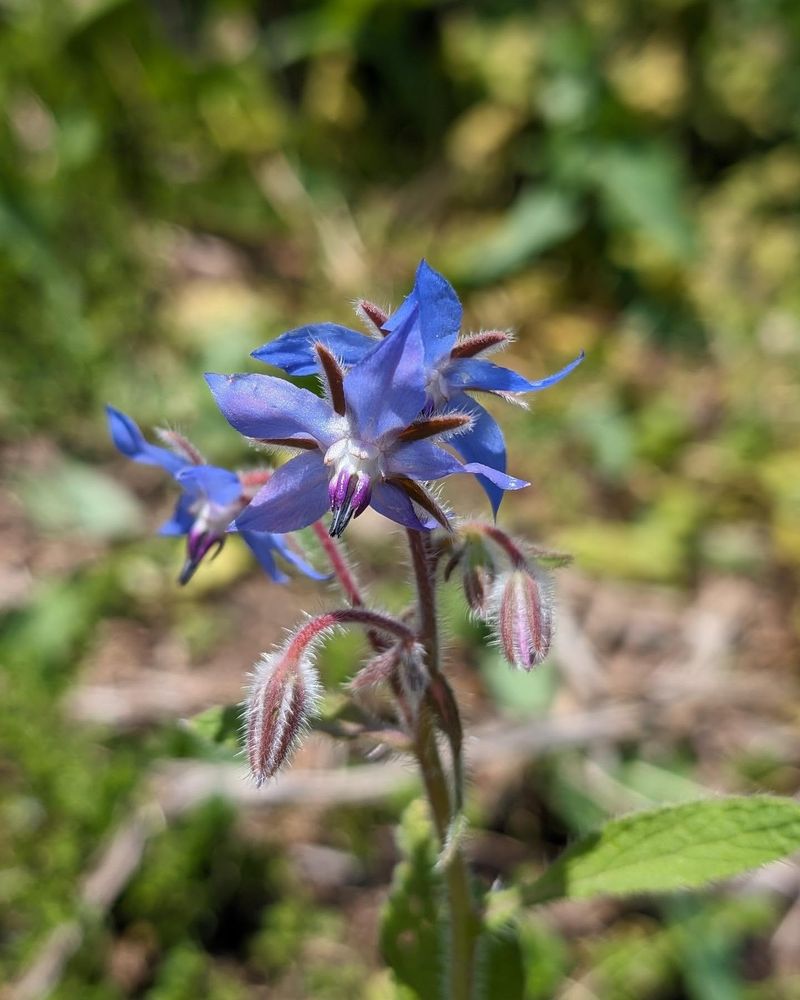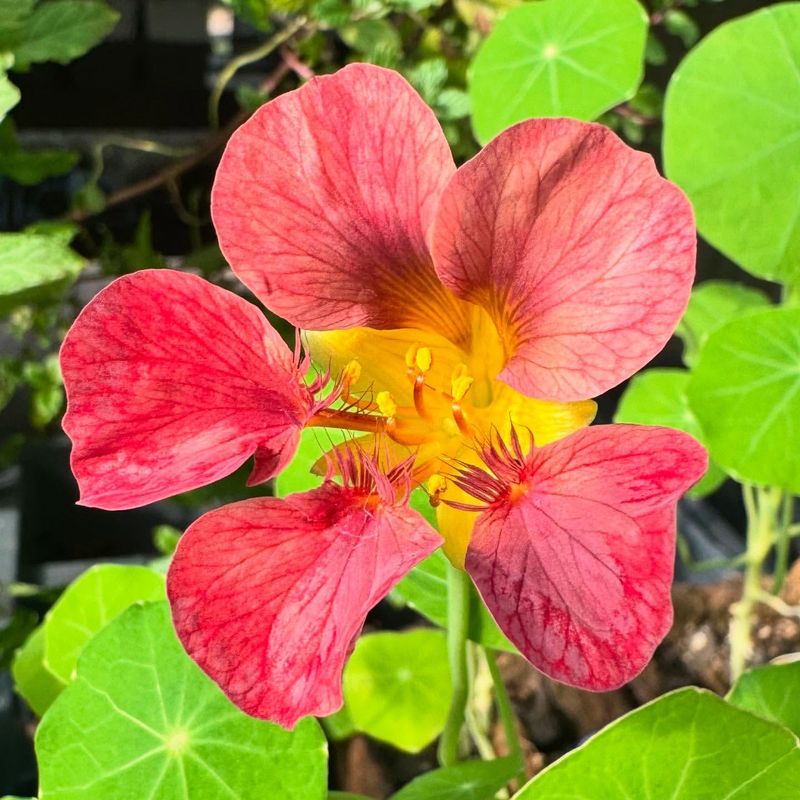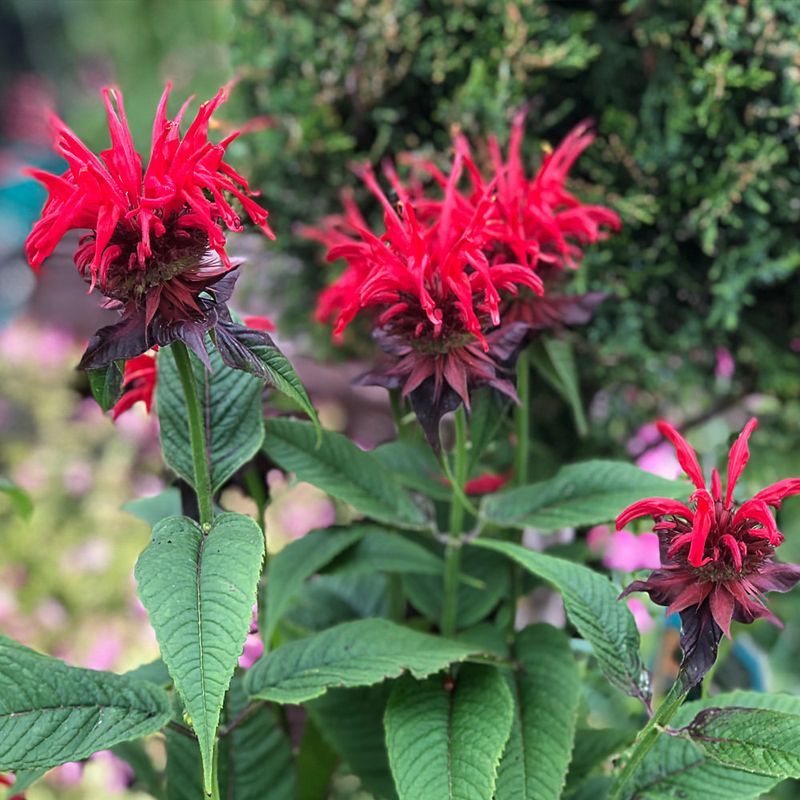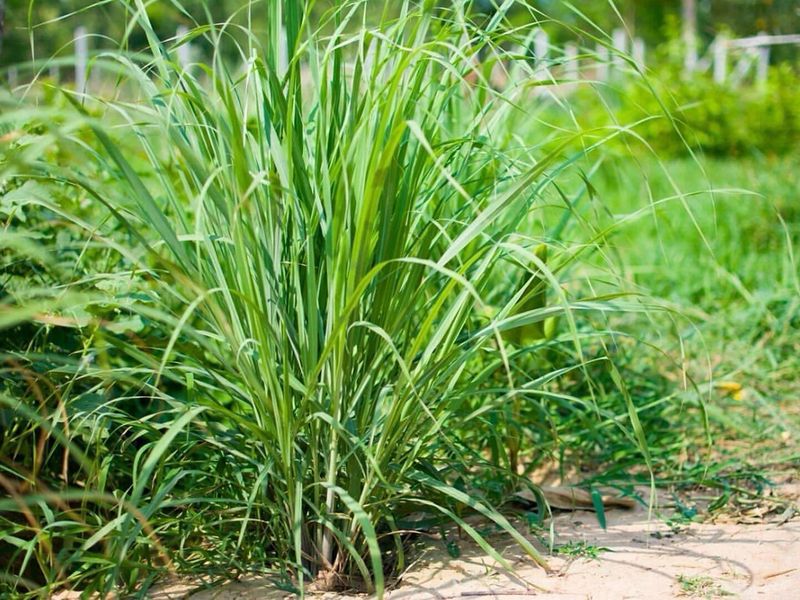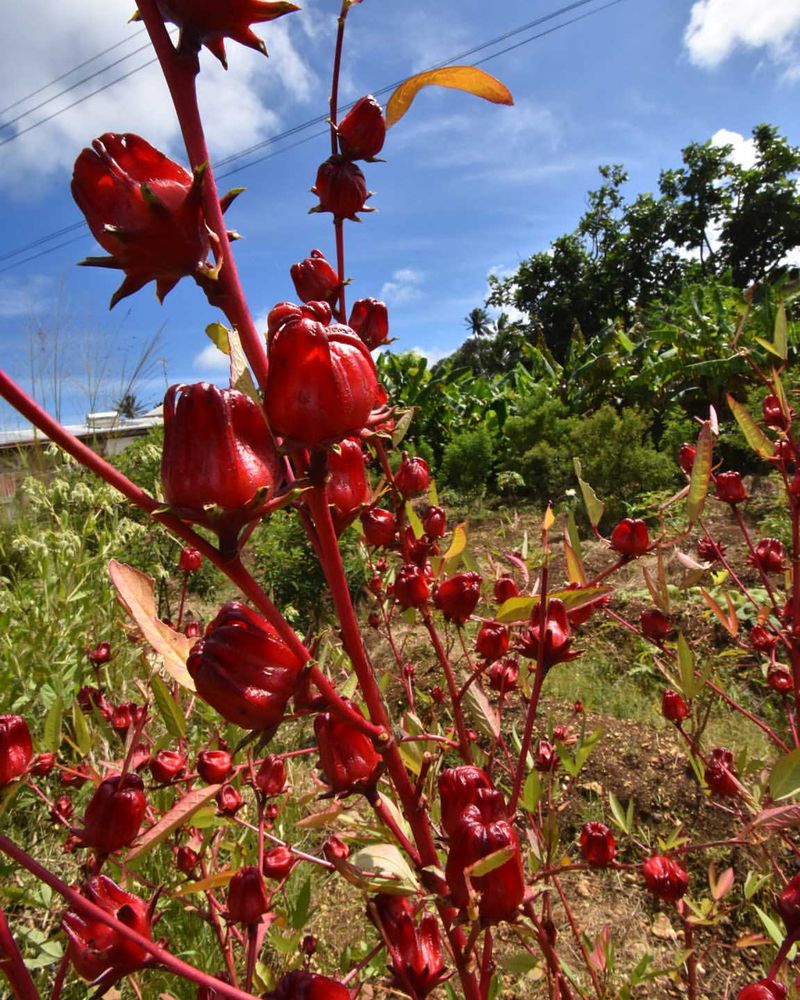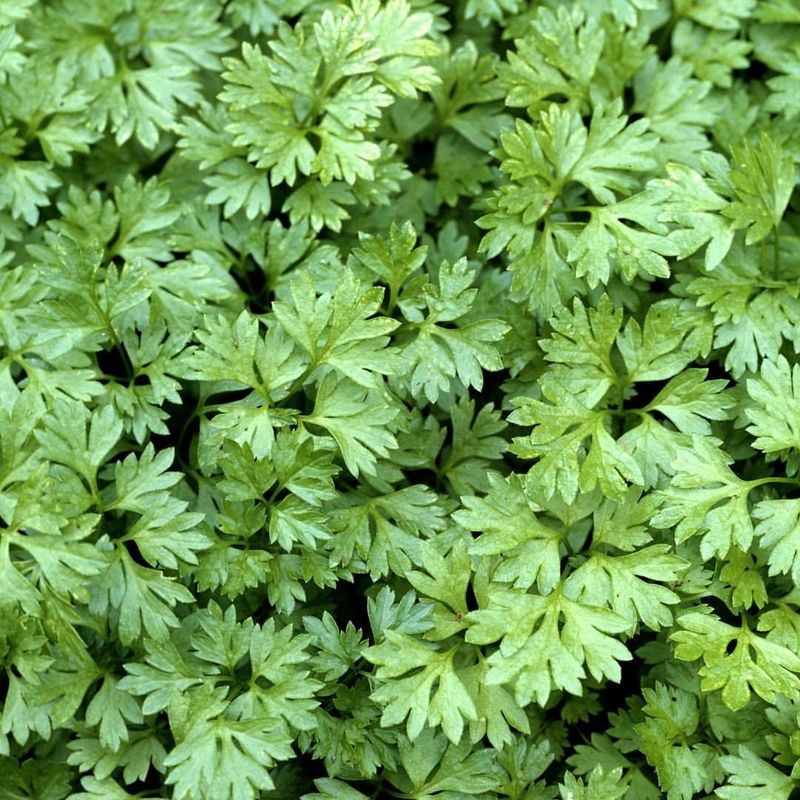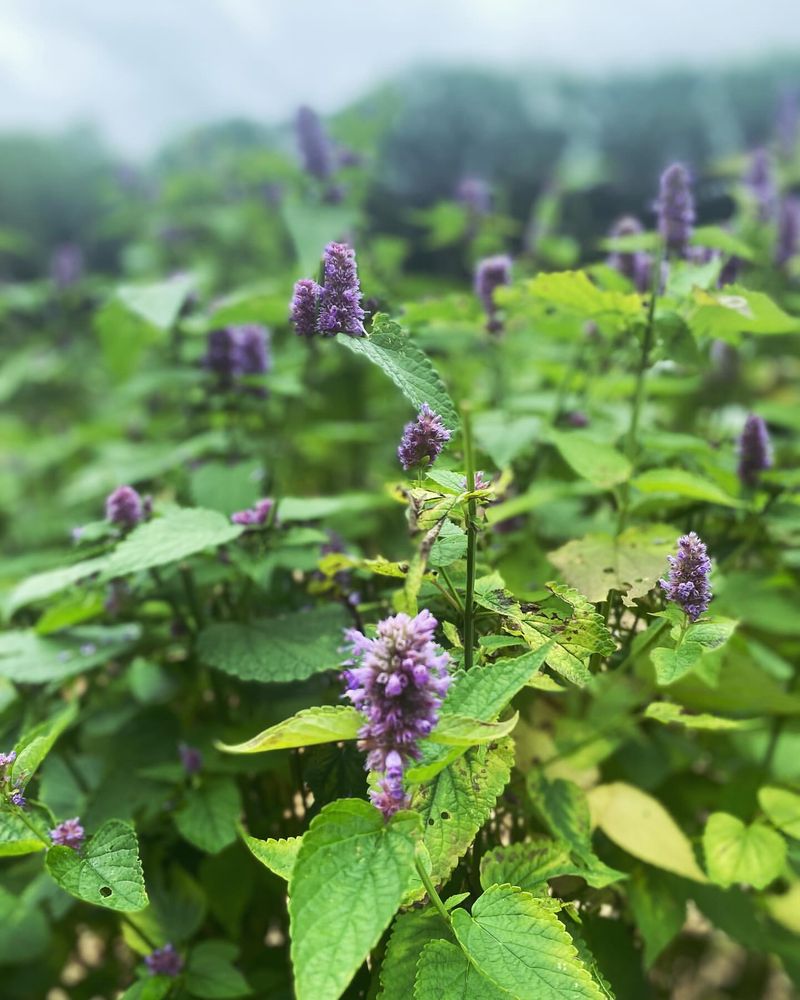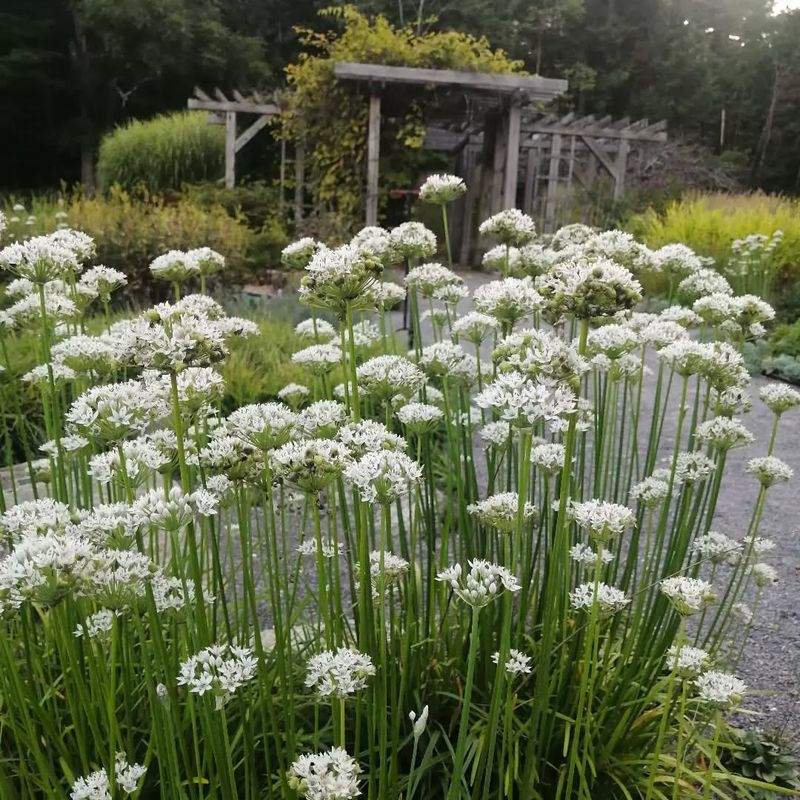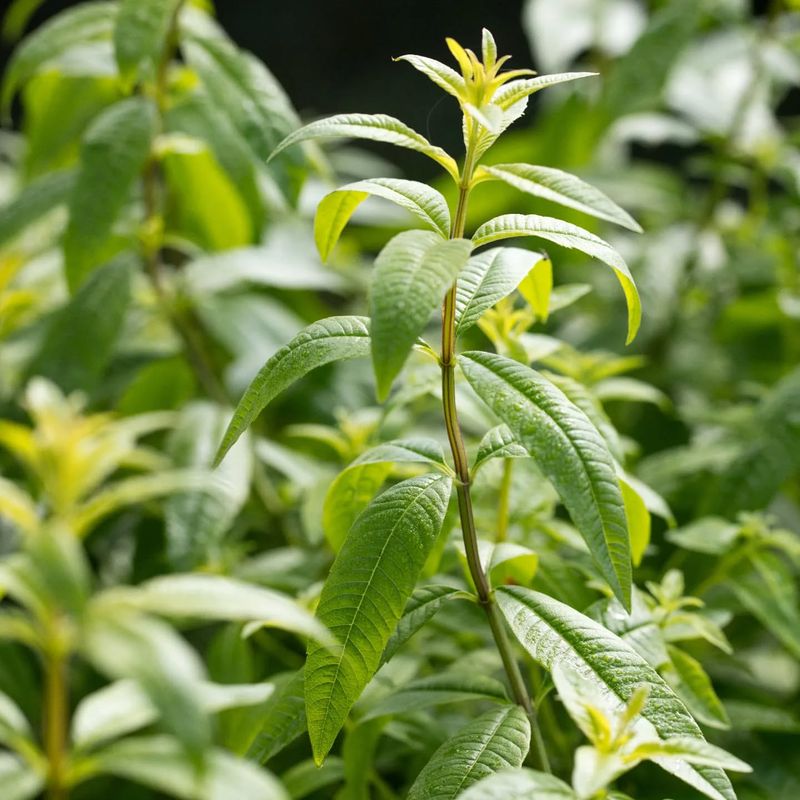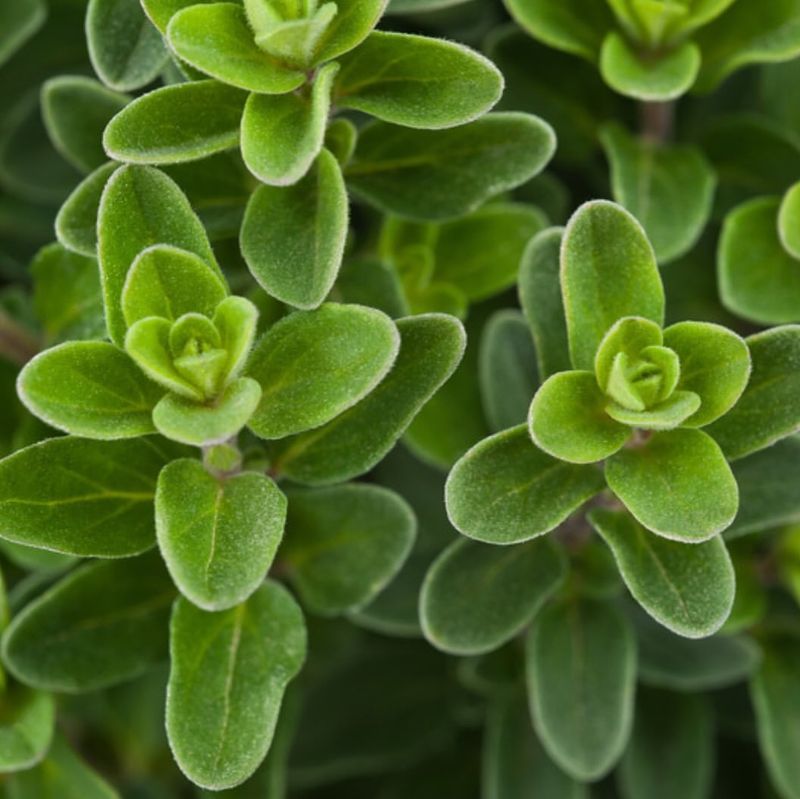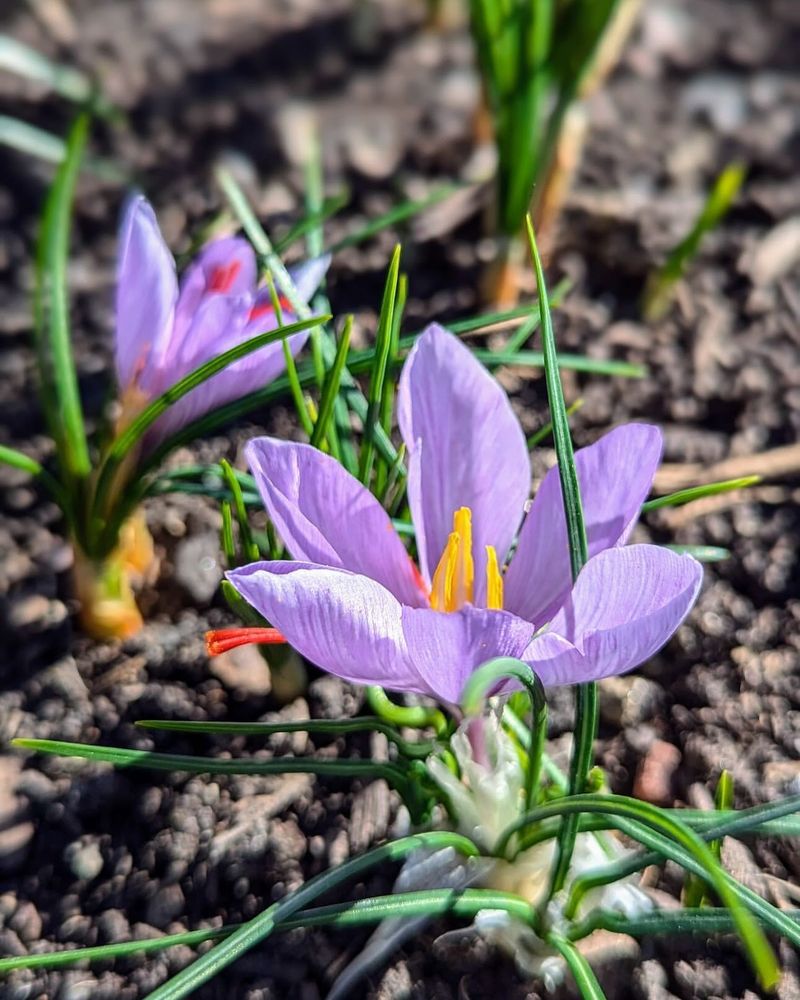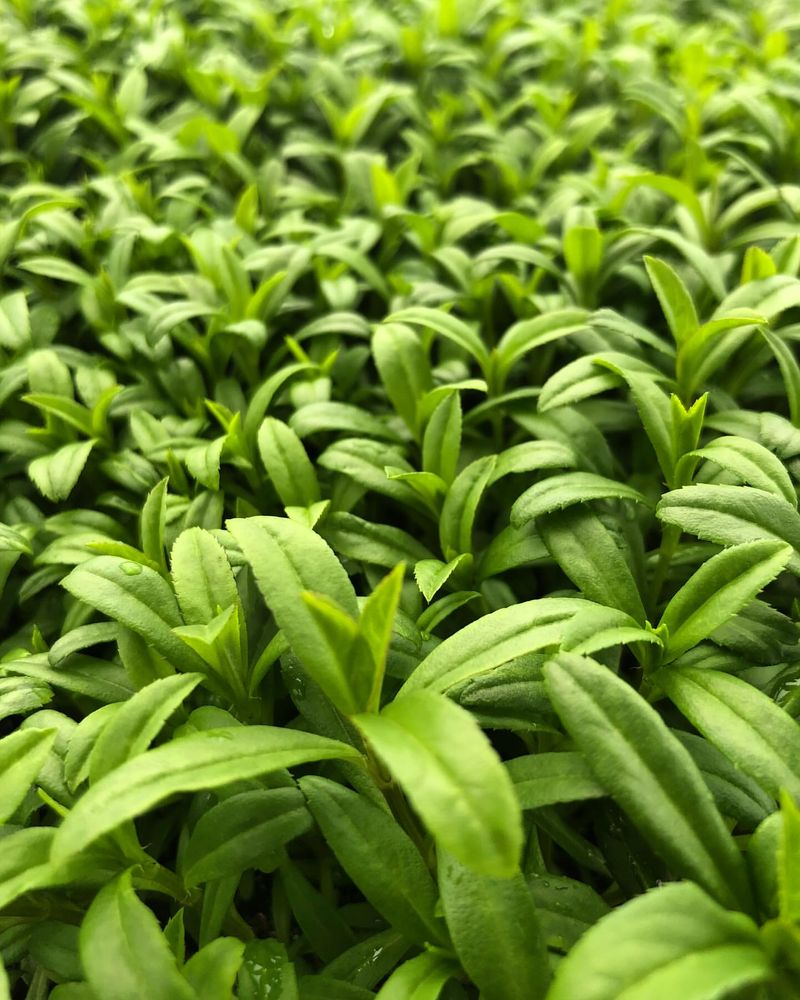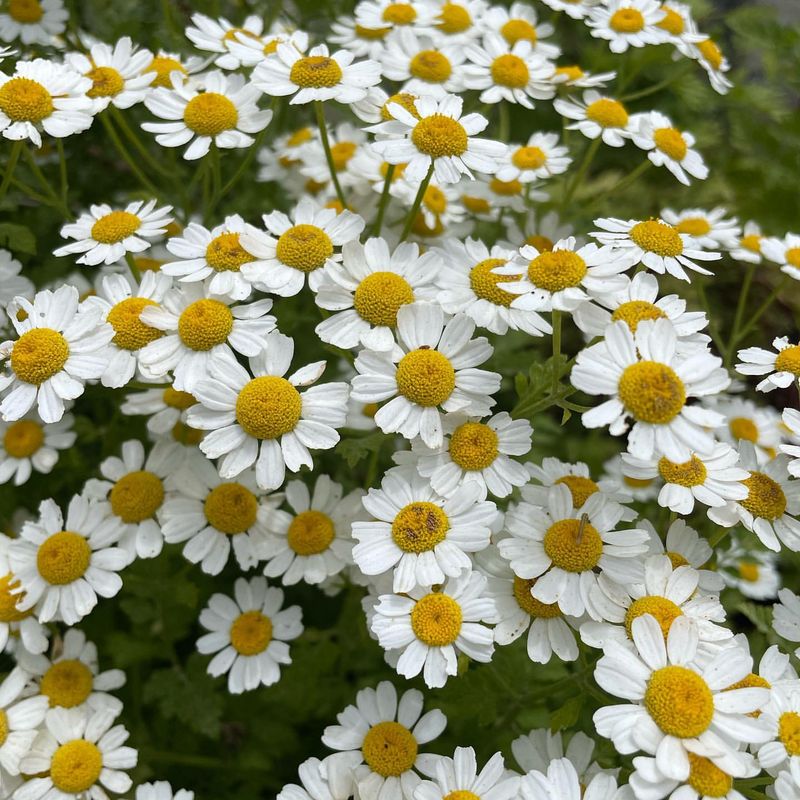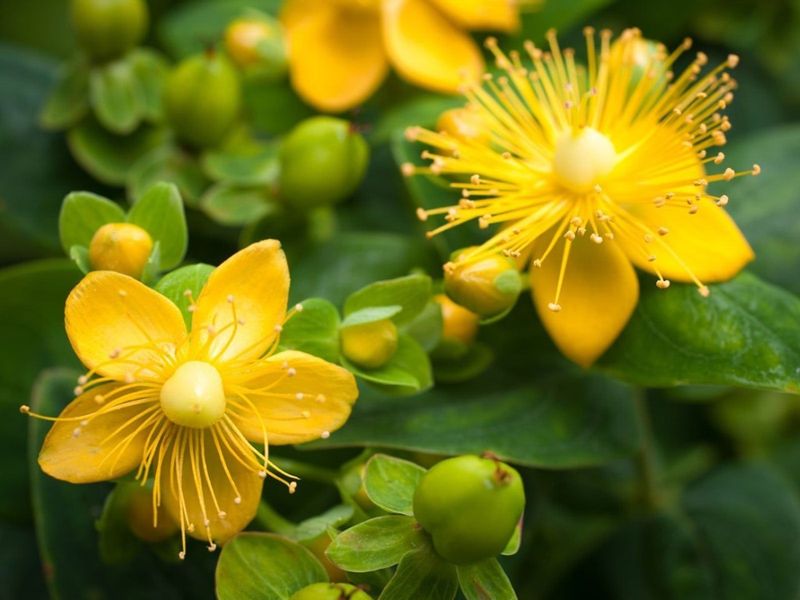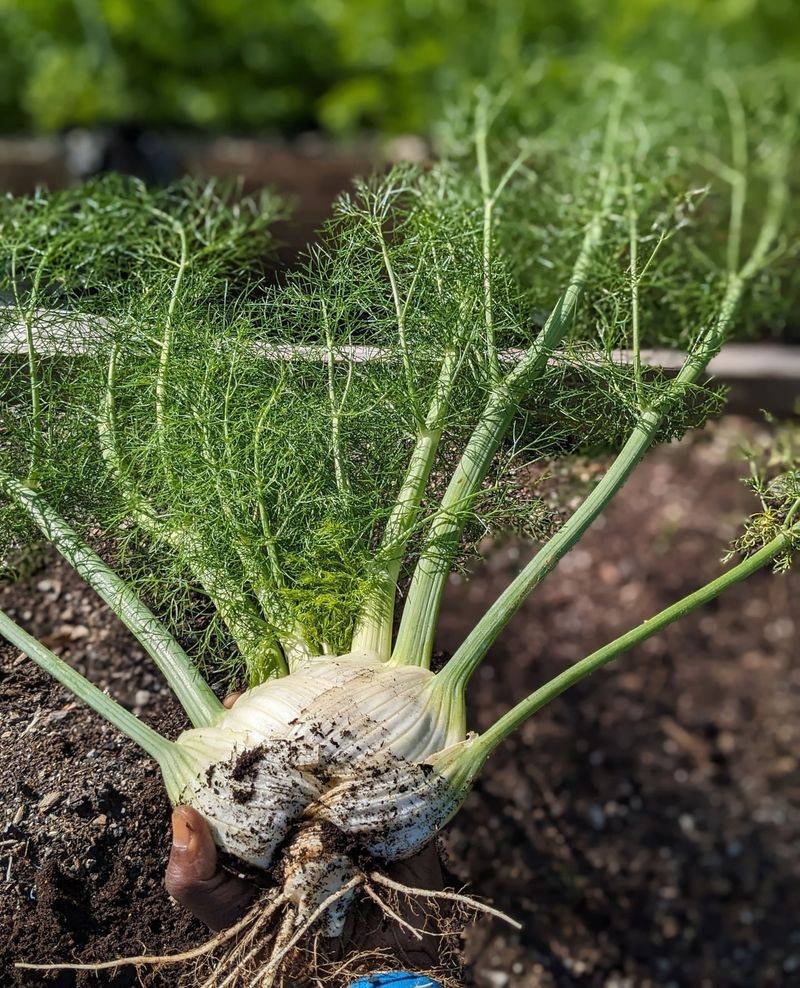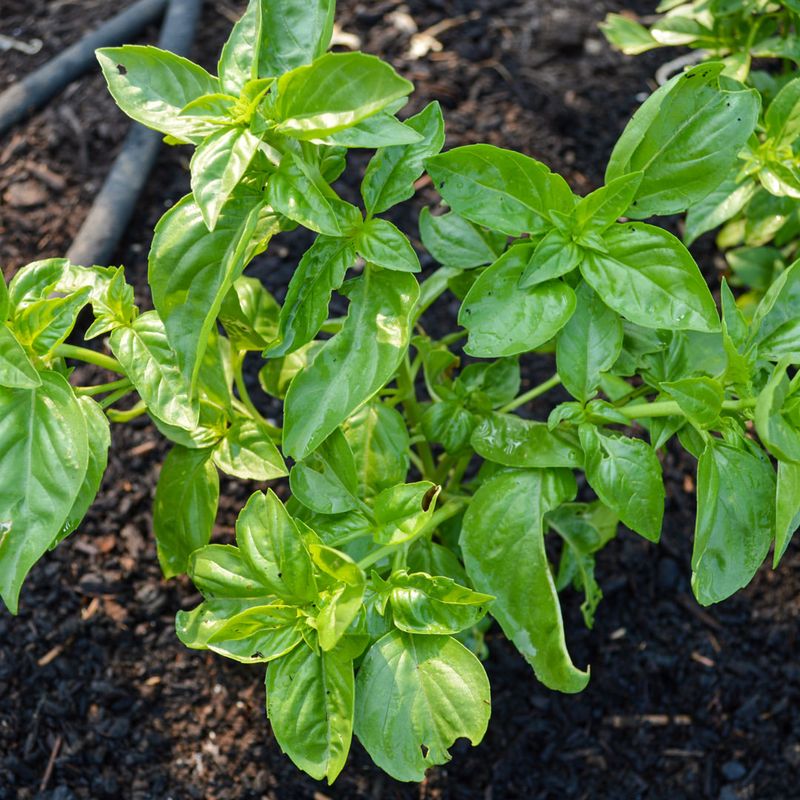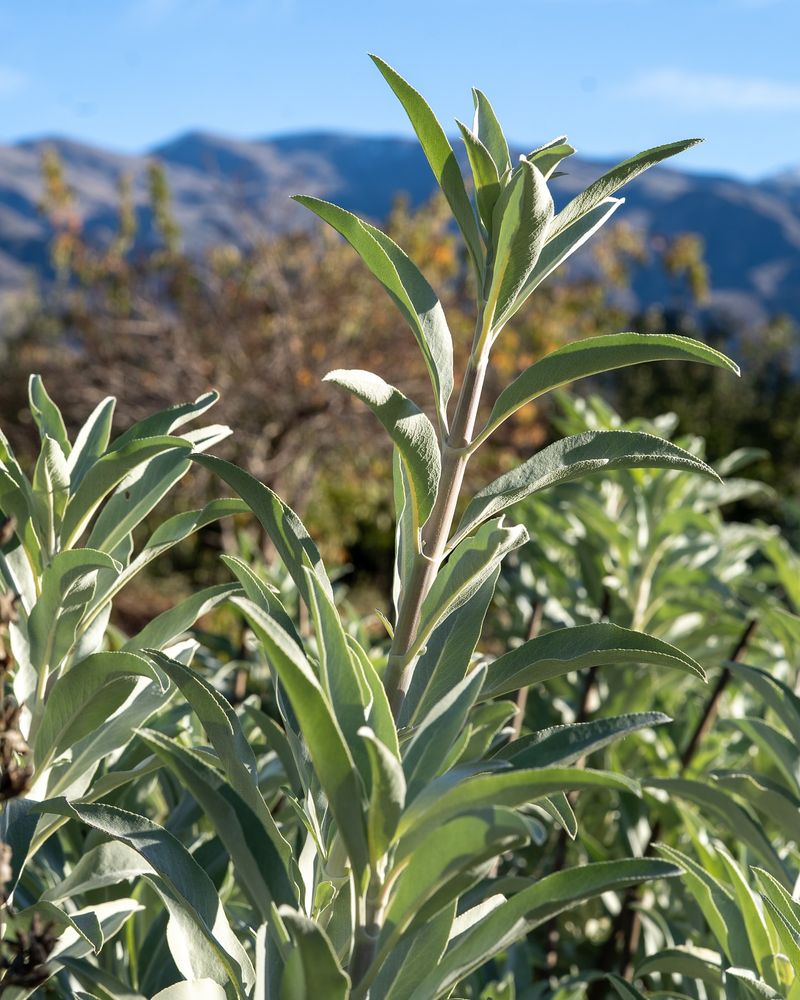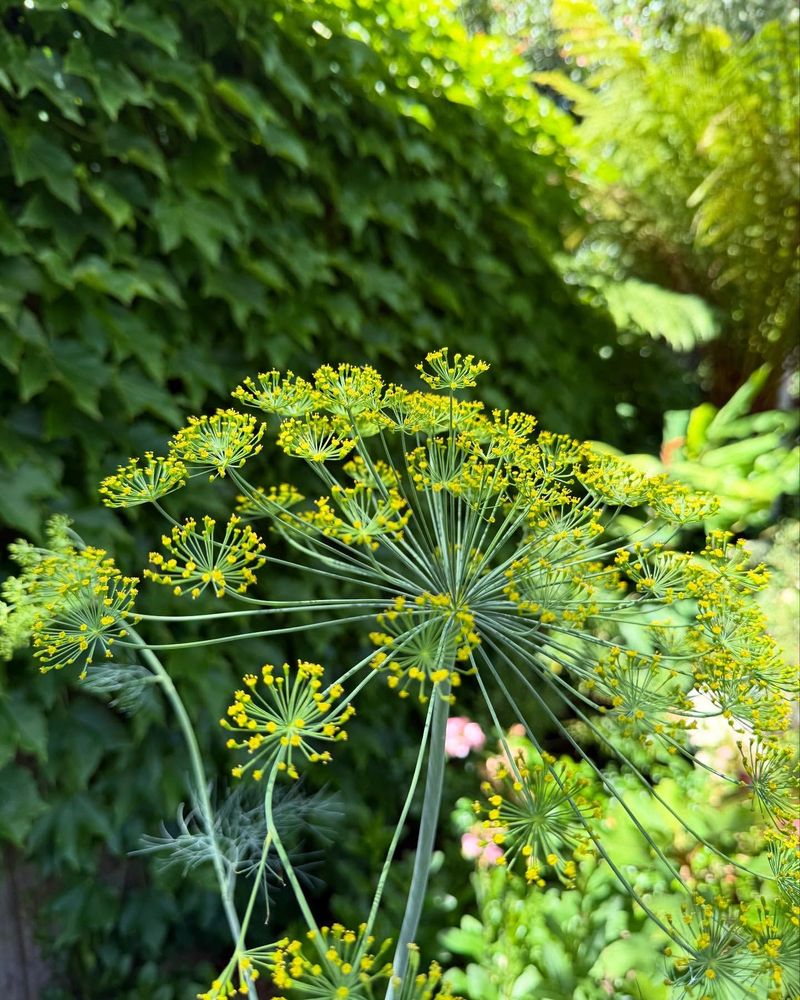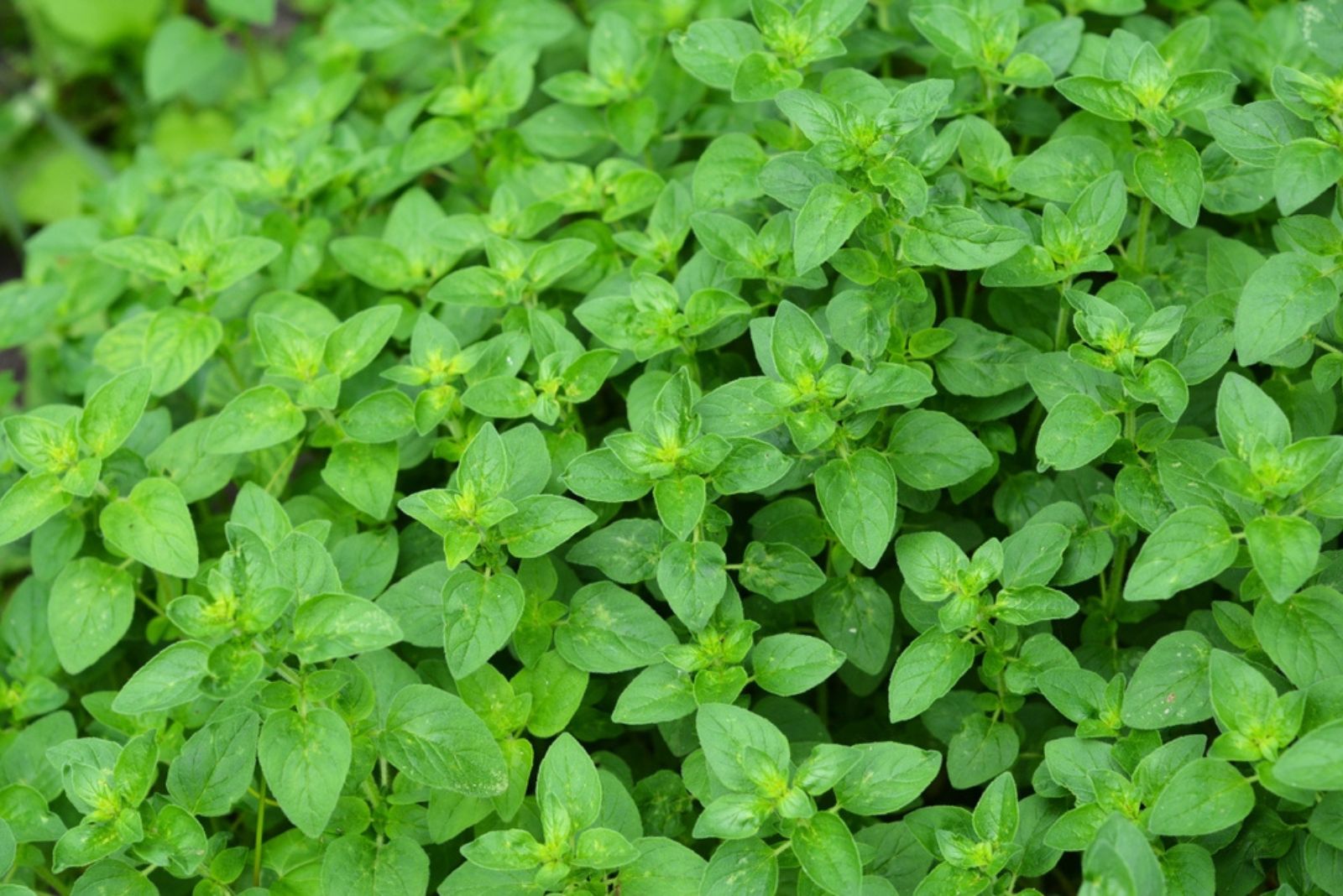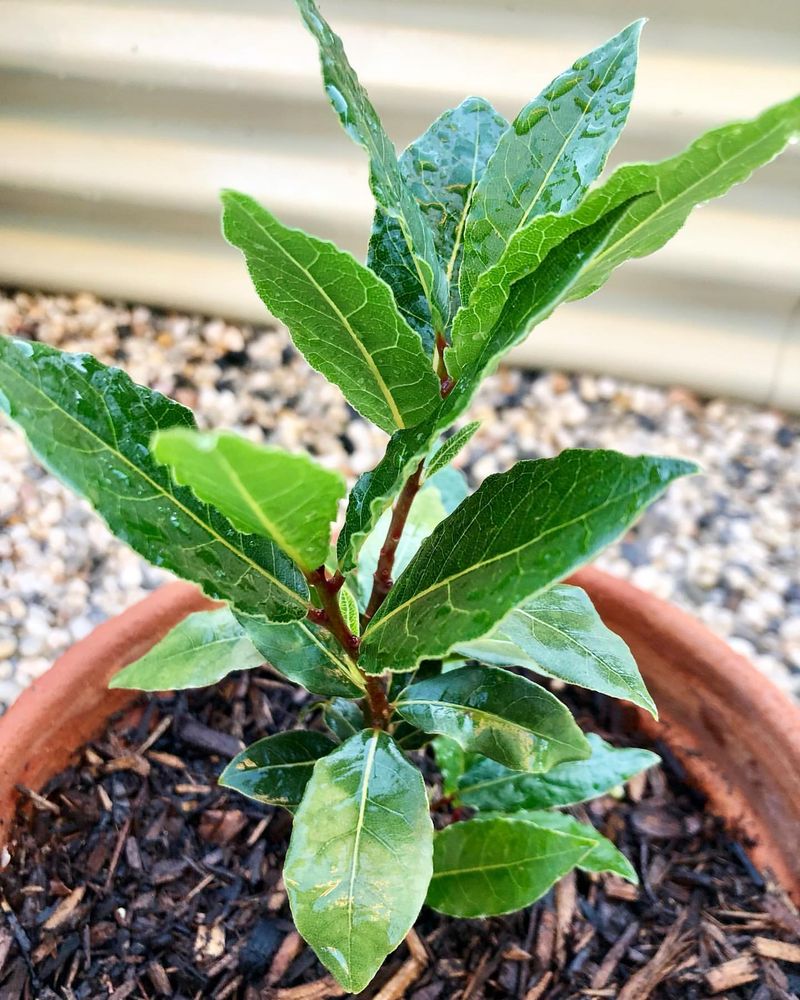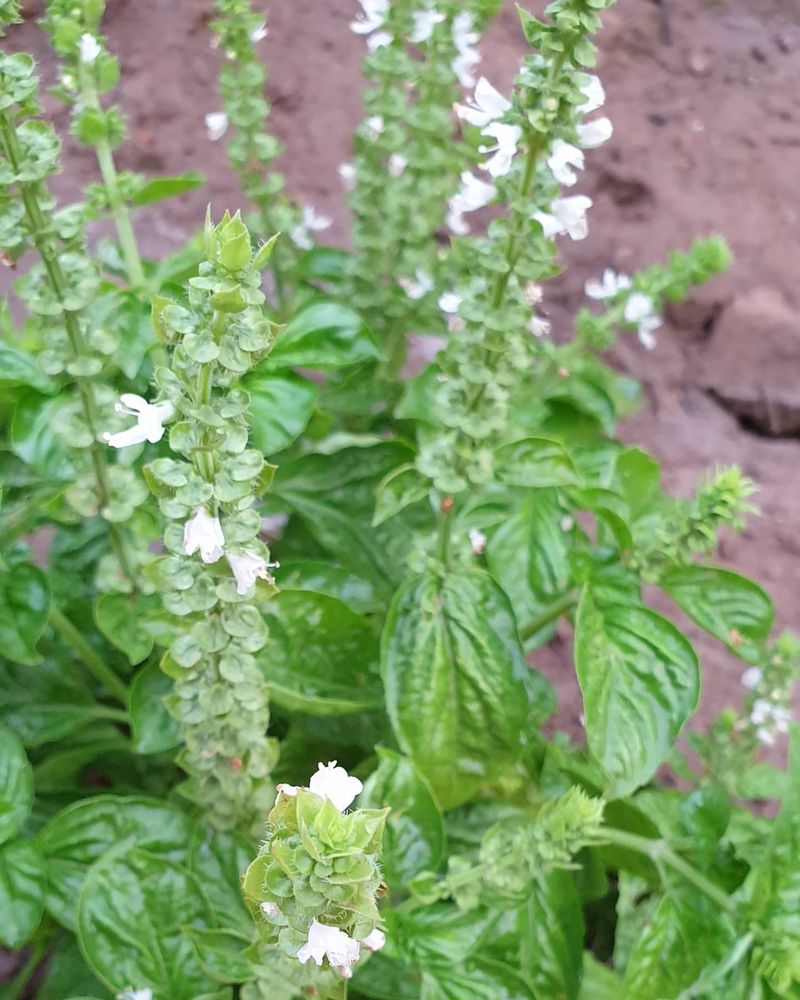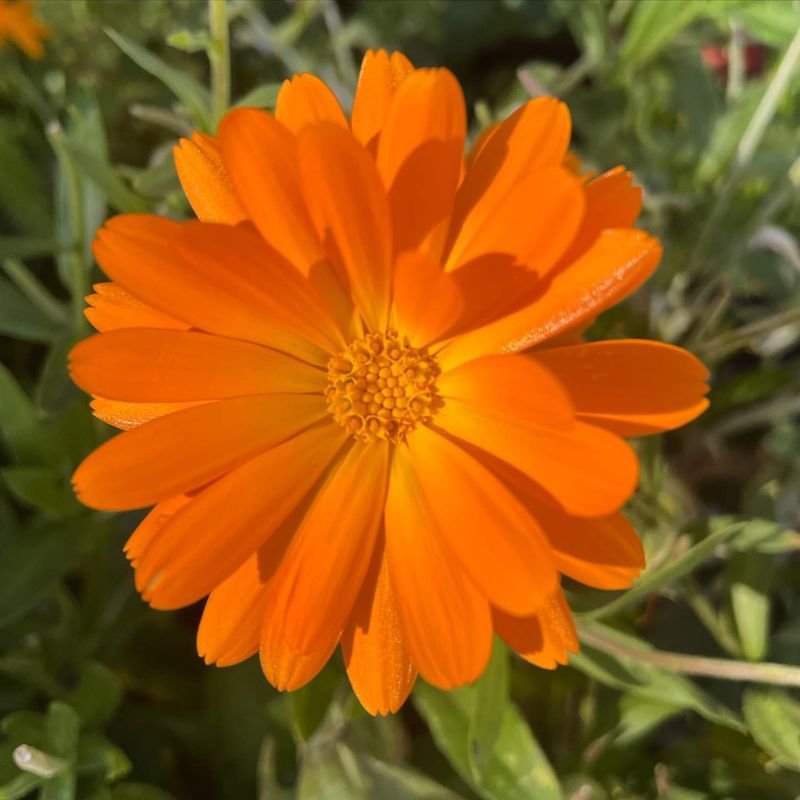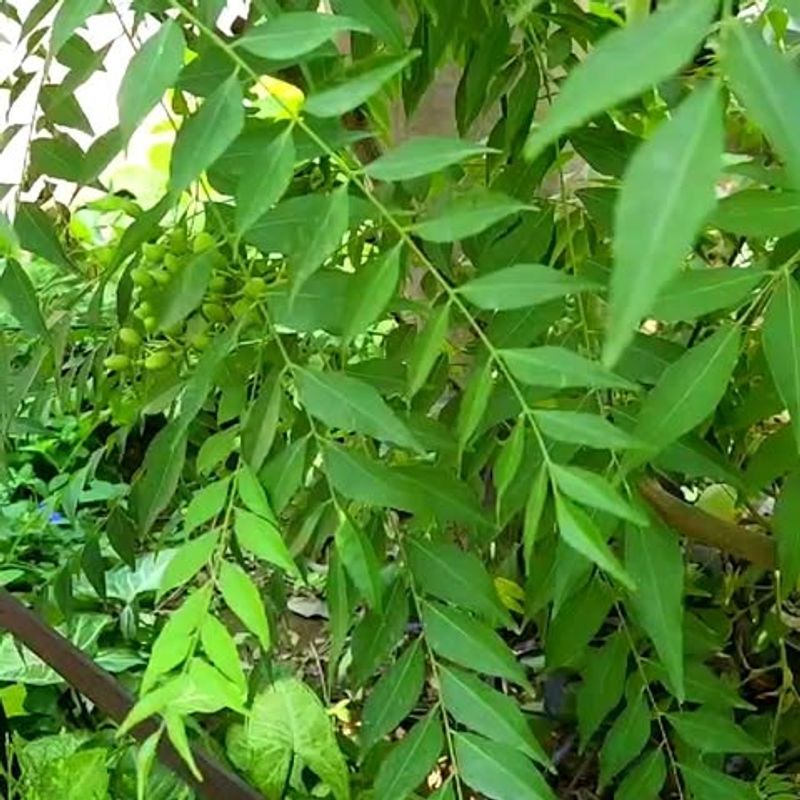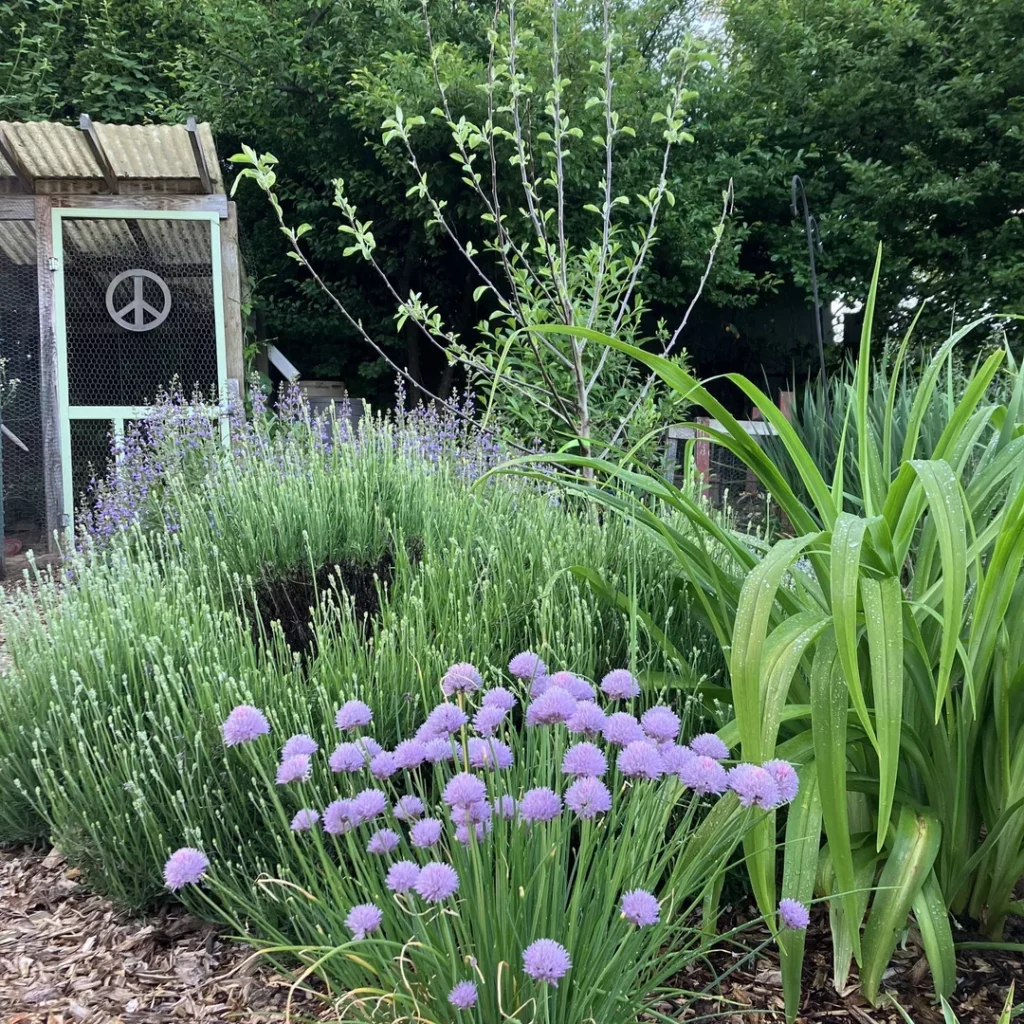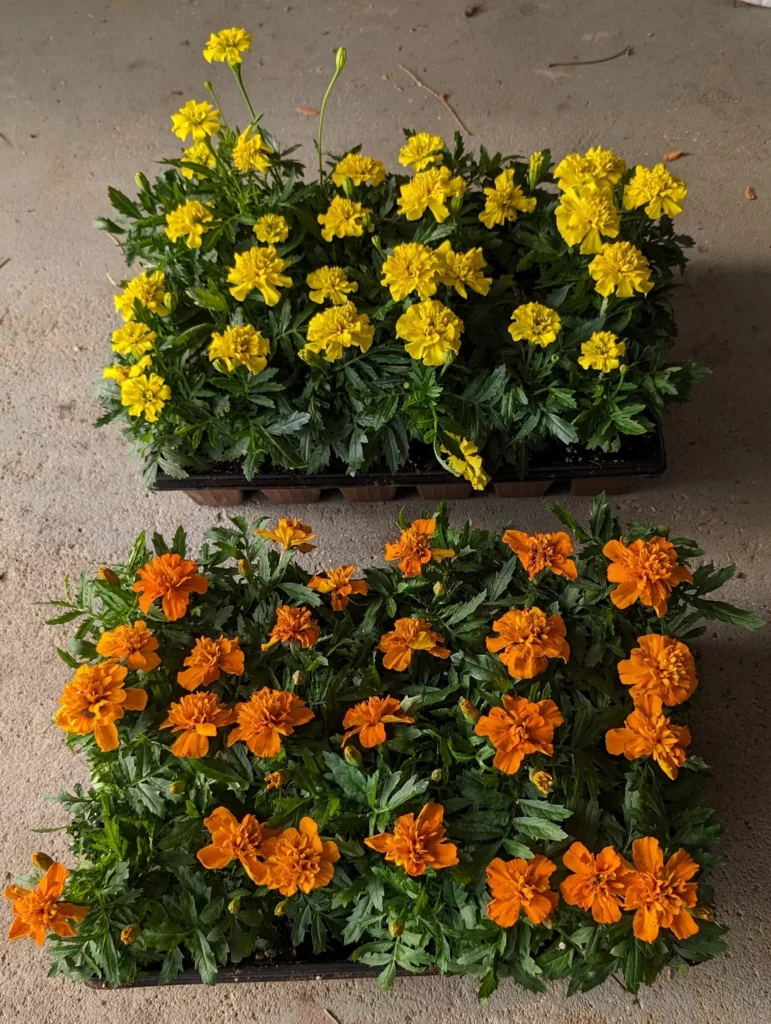Herbs bring flavor, fragrance, and a touch of magic to your backyard. Whether you’re a seasoned gardener or a beginner, there’s something truly satisfying about growing your own herbs. This guide will introduce you to 34 unique herbs that can thrive in your backyard, each with its own special characteristics and benefits.
From culinary uses to medicinal properties, these herbs offer a wide array of advantages. Get ready to immerse yourself in the world of herbs and discover how they can transform your gardening experience.
1. Lemon Balm
Imagine the soothing aroma of lemons wafting through your garden. Lemon balm, a perennial herb, is known for its calming properties.
Its bright green leaves release a fresh, citrus scent, making it a favorite for teas and herbal remedies. This herb is not only easy to grow but also attracts beneficial insects.
Plant it in a sunny spot, and it rewards you with a bushy growth. Lemon balm is perfect for adding a hint of lemon flavor to salads, desserts, and drinks, making it a versatile addition to any garden.
2. Thai Basil
A splash of exotic flavor can be found in Thai basil. This herb, with its distinct licorice scent, brings a unique taste to dishes.
Its purple stems and vibrant green leaves make it a visually appealing addition to any garden. Thai basil thrives in warm environments, requiring plenty of sunlight and regular watering.
Used extensively in Southeast Asian cuisine, it complements curries and stir-fries beautifully. Its aromatic leaves can elevate the simplest of dishes, making it a must-have for culinary enthusiasts.
3. Lovage
Picture tall, celery-like stalks gracing your garden borders. Lovage is a perennial herb with a flavor reminiscent of celery and parsley.
Its towering height and lush green foliage make it an excellent backdrop for other plants. Lovage prefers rich, well-drained soil and a sunny spot.
The leaves, seeds, and roots are all edible, often used to enhance soups, stews, and salads. Adding lovage to your backyard not only enhances your garden’s aesthetics but also your culinary creations.
4. Holy Basil
Engage your senses with Holy basil, revered in many cultures for its spiritual significance. This herb, with its spicy aroma, is cherished for its healing properties.
The plant features small green leaves and delicate purple flowers, adding beauty and purpose to your garden. Holy basil thrives best in warm, sunny locations.
It’s often brewed into teas or added to dishes for its peppery flavor. Planting Holy basil not only enriches your garden but also your spirit.
5. Chocolate Mint
Indulge in the unexpected delight of chocolate mint. This herb captivates with its sweet, chocolatey fragrance.
Its dark green leaves, tinged with brown, offer a unique twist to traditional mint. Chocolate mint grows vigorously, requiring regular trimming to keep it contained.
Perfect for desserts, teas, and even savory dishes, its versatility knows no bounds. Adding chocolate mint to your garden promises endless culinary possibilities and a pleasing aroma.
6. Cilantro
Vibrant and full of life, cilantro brings a robust flavor to your garden. Known for its distinctive taste, it’s a staple in many world cuisines.
The plant showcases lush green leaves that thrive in sunny spots with well-drained soil. Cilantro grows quickly, so regular harvesting is key to prolonging its life.
Beyond its culinary uses, cilantro is believed to have detoxifying properties. Growing this herb adds both flavor and health benefits to your garden.
7. Summer Savory
A hint of peppery zest can be found in summer savory. This herb, with its delicate white flowers, adds a subtle spice to dishes.
The plant features slender green leaves and thrives in sunny, well-drained locations. Regular pruning encourages bushy growth and prolongs its production.
Perfect for seasoning meats and vegetables, summer savory enhances flavors without overpowering them. Growing it in your backyard provides a fresh, aromatic spice at your fingertips.
8. Fenugreek
Consider the unique benefits of fenugreek, an herb prized for its nutritional value. Its green leaves and yellow flowers add a touch of beauty to any garden.
Fenugreek prefers a sunny location and well-drained soil. Regular watering ensures healthy growth and an abundant harvest.
Used in culinary and medicinal applications, its seeds are a staple in many recipes. Growing fenugreek not only enhances your garden’s appeal but also your health.
9. Rosemary
An evergreen favorite, rosemary is a versatile herb known for its aromatic leaves. It thrives in Mediterranean climates, requiring plenty of sunlight and well-drained soil.
The plant features needle-like leaves and tiny blue flowers, adding both fragrance and beauty to your garden. Rosemary’s robust flavor is ideal for seasoning meats, especially lamb and poultry.
Its essential oils are used in aromatherapy, offering a range of health benefits. Cultivating rosemary in your backyard ensures a constant supply of this delightful herb.
10. Borage
Add a splash of color to your garden with borage. Its star-shaped blue flowers make it a visually stunning addition.
The plant features hairy leaves and thrives in sunny spots with well-drained soil. Known for its cucumber-like flavor, borage leaves are often used in salads and teas.
The flowers are edible too, often used as a garnish. By growing borage, you not only beautify your garden but also enhance your culinary creations.
11. Nasturtium
Brighten your garden with nasturtium, known for its colorful blossoms and peppery leaves. Its vibrant orange and yellow flowers are a feast for the eyes.
The plant thrives in sunny locations, requiring little maintenance. Both the flowers and leaves are edible, adding a spicy kick to salads and garnishes.
Nasturtium’s ability to repel pests makes it a valuable companion plant. By growing nasturtium, you add beauty and functionality to your garden.
12. Bee Balm
Create a haven for pollinators with bee balm. This herb is adored for its bright red tubular flowers and spicy scent.
The plant features lush green foliage and thrives in sunny, well-drained areas. It’s a magnet for bees and butterflies, enhancing your garden’s biodiversity.
Bee balm is often used in teas and potpourris, thanks to its fragrant leaves. Planting bee balm not only benefits pollinators but also your sensory experiences.
13. Lemongrass
Transport your senses to a tropical paradise with lemongrass. Known for its citrusy aroma and flavor, it’s a staple in Asian cuisine.
The plant features tall, slender green stalks and thrives in sunny, warm environments. It requires well-drained soil and regular watering for optimal growth.
Lemongrass isn’t just for cooking; it’s also used in teas and natural remedies. Growing lemongrass adds a touch of the tropics to your backyard.
14. Sorrel
For a tangy twist, consider sorrel. This herb, with its lemony flavor, is a refreshing addition to your garden.
The plant displays bright green, arrow-shaped leaves and grows well in sunny or partially shaded areas. Sorrel requires rich, well-drained soil for optimal growth.
It’s often used in soups, sauces, and salads. By adding sorrel to your garden, you expand your culinary horizons and enjoy a perennial harvest.
15. Chervil
Introduce a hint of anise to your garden with chervil. Its delicate, fern-like leaves are both beautiful and flavorful.
Chervil prefers cool, shaded areas with rich, moist soil. Regular watering and harvesting promote continuous growth.
Often used in French cuisine, it enhances the flavor of eggs, fish, and salads. By cultivating chervil, you add elegance and taste to your herb collection.
16. Anise Hyssop
Consider the enchanting anise hyssop, with its purple flower spikes and anise-scented leaves. This herb is a favorite among pollinators.
It thrives in sunny locations with well-drained soil and is relatively easy to maintain. Anise hyssop’s leaves can be used in teas and desserts, adding a licorice-like flavor.
The plant’s beauty and fragrance make it a delightful addition to any garden, attracting bees and butterflies.
17. Garlic Chives
Enhance your garden with the mild flavor of garlic chives. This herb features flat green leaves and white star-shaped flowers.
Garlic chives thrive in sunny locations with well-drained soil. Regular harvesting encourages new growth and prolongs its life.
Used in a variety of dishes, they add a subtle garlic flavor without overpowering. Growing garlic chives provides a fresh, aromatic addition to your culinary repertoire.
18. Lemon Verbena
Add a refreshing scent to your garden with lemon verbena. This herb features lance-shaped green leaves that emit a strong lemon aroma.
Lemon verbena thrives in sunny, warm locations with well-drained soil. Regular pruning helps maintain its shape and encourages bushy growth.
Often used in teas, desserts, and potpourris, it adds a citrusy flavor and aroma. Growing lemon verbena ensures a constant supply of this delightful fragrance.
19. Marjoram
Discover the sweet, floral aroma of marjoram. This herb, with its small green leaves, is a staple in Mediterranean cuisine.
Marjoram thrives in sunny locations with well-drained soil, requiring minimal maintenance. Its tiny white flowers add a touch of elegance to any garden.
Used to season meats, soups, and sauces, marjoram enhances flavors without overpowering them. By growing marjoram, you add versatility and fragrance to your culinary garden.
20. Saffron
The allure of saffron lies in its luxurious flavor and color. This herb, derived from the stigmas of the saffron crocus, is a treasure in any garden.
The plant features purple petals and vivid red stigmas, thriving in sunny, well-drained locations. Saffron requires patience, as it’s harvested by hand.
Used in various cuisines, it imparts a rich flavor and golden hue to dishes. Growing saffron in your garden brings a touch of elegance and culinary excellence.
21. Tarragon
A sophisticated addition to any garden, tarragon offers a unique blend of flavors. Its slender green leaves are both aromatic and flavorful.
Tarragon thrives in sunny or partially shaded areas with well-drained soil. Regular trimming encourages bushy growth and vigorous production.
Commonly used in French cuisine, it enhances dishes with its subtle anise flavor. By cultivating tarragon, you elevate your culinary creations and enjoy a perennial herb harvest.
22. Chamomile
Bring tranquility to your garden with chamomile. Known for its calming properties, it features small daisy-like white flowers.
Chamomile thrives in sunny areas with well-drained soil. It requires minimal maintenance, making it an ideal choice for beginners.
Often used in teas and natural remedies, its soothing effects are well-known. Growing chamomile adds beauty and serenity to your backyard.
23. St. John’s Wort
Consider the healing properties of St. John’s Wort. This herb, with its bright yellow flowers, is used in various natural remedies.
The plant thrives in sunny areas with well-drained soil and is relatively easy to grow. Regular pruning helps maintain its shape and promote bushy growth.
Often used in oils and tinctures, it’s valued for its potential health benefits. Growing St. John’s Wort adds a touch of medicinal value to your garden.
24. Fennel
The distinct aroma of fennel can transform any garden. Known for its feathery leaves and yellow flowers, it’s a visual and culinary delight.
Fennel thrives in sunny, well-drained locations, adding a touch of elegance to your garden. Its anise-flavored seeds are used in various cuisines.
The entire plant, including the bulb, is edible. Growing fennel provides not only culinary versatility but also visual appeal.
25. Basil
A staple in many kitchens, basil offers a delightful aroma and flavor. This herb features lush green leaves and small white flowers.
Basil thrives in sunny, warm locations with well-drained soil. Regular pruning encourages bushy growth and continuous production.
Used in a variety of dishes, from pasta to salads, basil is incredibly versatile. Growing basil guarantees a fresh supply of this beloved herb all season long.
26. Sage
Enhance your garden with the earthy aroma of sage. Known for its culinary and medicinal uses, it features soft, gray-green leaves.
Sage thrives in sunny areas with well-drained soil, requiring minimal care. Its purple flowers attract pollinators, adding biodiversity to your garden.
Used to flavor meats, sauces, and teas, sage is a versatile addition. Growing sage ensures a constant supply of this valuable herb.
27. Dill
Add a touch of freshness with dill. Its feathery green leaves and yellow flower umbels are both attractive and aromatic.
Dill thrives in sunny locations with well-drained soil, requiring minimal maintenance. It’s often used in pickling and flavoring dishes.
The entire plant is edible, adding a unique flavor to salads, soups, and more. Growing dill provides both culinary and visual benefits for your garden.
28. Oregano
Infuse your garden with the robust flavor of oregano. This herb, with its small green leaves, is a staple in Mediterranean cuisine.
Oregano thrives in sunny, well-drained areas, requiring minimal care. Its pink flowers add a touch of color to your garden.
Used to season meats, sauces, and pizzas, oregano enhances flavors beautifully. Growing oregano ensures a fresh supply of this essential herb.
29. Bay Laurel
Consider the timeless appeal of bay laurel. Known for its aromatic leaves, it’s a classic addition to any garden.
The plant features glossy green leaves and thrives in sunny or partially shaded areas. Regular pruning helps maintain its shape.
Often used in soups, stews, and marinades, bay leaves add depth to dishes. Growing bay laurel provides a perennial source of this fragrant herb.
30. Catnip
Delight your feline friends with catnip. This herb is adored by cats for its aromatic leaves and playful effects.
Catnip features heart-shaped green leaves and white flowers, thriving in sunny or partially shaded areas. It requires minimal maintenance and is easy to grow.
Beyond entertaining cats, it’s often used in teas and herbal remedies. Growing catnip adds a touch of whimsy and utility to your garden.
31. Calendula
Bring a burst of color to your garden with calendula. Its bright orange flowers are not only beautiful but also edible.
Calendula thrives in sunny locations with well-drained soil. It’s often used in teas, salads, and skin care remedies for its soothing properties.
The plant requires regular deadheading to promote continuous blooms. Growing calendula enhances your garden’s beauty and offers versatile uses.
32. Curry Leaf
Infuse your garden with the aroma of curry leaf. This herb, with shiny green leaves, is essential in South Asian cooking.
Curry leaf thrives in warm, sunny locations with well-drained soil. It requires regular pruning to maintain its bushy shape.
Used to flavor curries and soups, it adds a distinctive taste to dishes. Growing curry leaf offers a fresh, aromatic supply for culinary enthusiasts.
33. Chives
These slender, green stalks bring a mild onion flavor to dishes, making them a perfect addition to any herb garden. Thriving in sunny spots with well-drained soil, they grow quickly and can be harvested frequently.
Regularly cutting back their stems encourages continuous growth, ensuring a steady supply of fresh herbs throughout the season.
Great for adding to salads, baked potatoes, and scrambled eggs, chives also offer a bright green pop of color to the garden, making them a visually appealing and practical choice.
34. Marigold
Bright yellow and orange flowers not only add color to your garden but also attract pollinators and deter pests. These cheerful plants are beneficial companion plants for herbs and vegetables.
While not a traditional culinary herb, their edible petals offer a mild, slightly spicy flavor that enhances salads or teas.
Marigolds thrive in sunny, well-drained spots and require minimal maintenance, making them both a practical and visually appealing addition to your garden.

